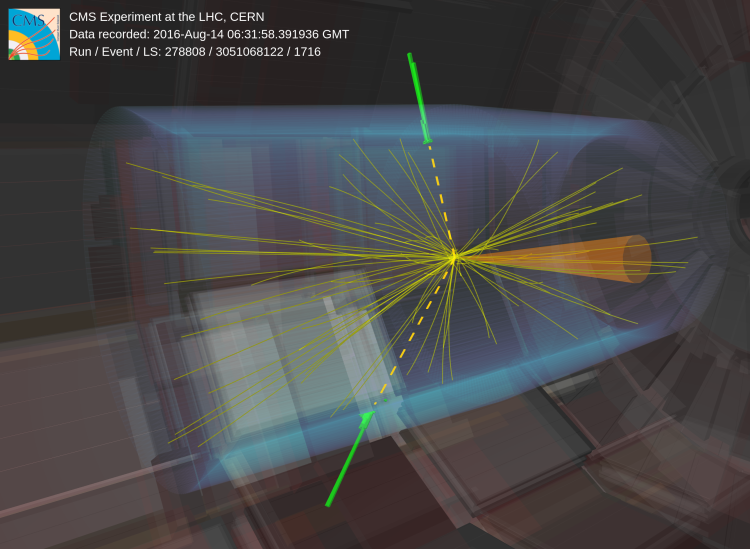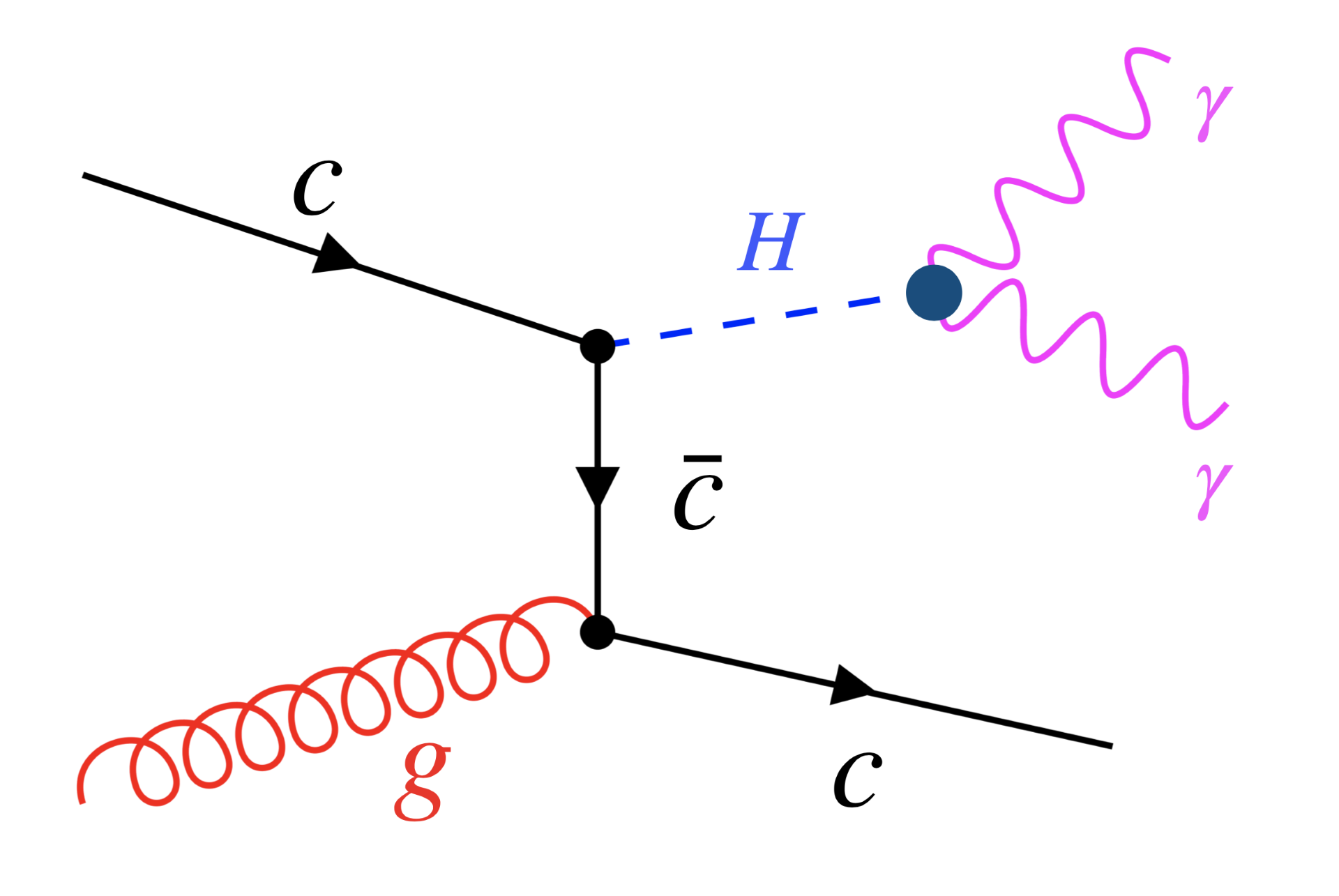
The study of the Higgs boson is one of the main goals of the physics program of the CMS experiment. The data collected up to now at the LHC helped us to refine our understanding of the Higgs mechanism, which is responsible for the generation of the masses of the fundamental particles. In the Standard Model, the coupling strength of the Higgs boson to fermions is precisely predicted and proportional to the mass of the fermions. Therefore, measurements of the coupling strength tell us if the Higgs boson indeed behaves as expected. Contrariwise, potential deviations of the measurements from the predictions could point to new physics beyond the Standard Model.
The masses of the fermions vary over a wide range, and so does the coupling strength. In order to get the full picture, the couplings need to be measured individually. While the coupling to third generation fermions (like bottom quarks, top quarks and tau leptons) have been observed, the interactions of the Higgs boson with second generation fermions are still largely unexplored. Recently, CMS has published first results of searches for Higgs couplings to muons and charm quarks, but more data and new ideas are needed to claim observation.
In particular, the measurement of the coupling to charm quarks is challenging. “The reconstruction of signatures with charm quarks relies on precision tracking and vertexing. Identifying charm quarks is challenging because the charmed hadrons have intermediate characteristics between light and b-hadrons and need to be discriminated from both. In terms of efficiency and mistag rate, the performance of the algorithms used to identify charm quarks is poorer compared to those used to identify bottom quarks” says Tiziano Bevilacqua, a third year PhD student at University of Zurich and PSI. “In our analysis we study the production of a Higgs boson in association with a charm quark (H+c) to get a handle on the coupling strength (Fig. 1). In contrast to other existing approaches, like the study of the Higgs boson decay to two charm quarks, we require the presence of only one charm jet in the final state and this way compensate for the lower rate of production.

Figure 1: The process of Higgs boson production in association with charm quarks is a sensitive probe of the Higgs boson coupling to second generation fermions.
The study of H+c production is interesting because it gives complementary information about the coupling strength and allows the exploitation of multiple Higgs boson decay channels. “We exploit the Higgs decay to two photons. This decay mode offers a series of notable advantages. Firstly, it provides a rare but clear signal, as it leaves distinct energy depositions in the electromagnetic calorimeter. Secondly, due to fewer background processes, it has a high signal-to-noise ratio, simplifying the analysis process and enhancing the statistical significance of any observed signal. Additionally, the high precision in measuring photon energy allows for precise measurements of the Higgs boson mass and couplings”, (Fig. 2) says Xuanhao Zhan, a PhD student at Peking University. Xuanhao and Tiziano, together with a team of senior scientists have carried out the first search for H+c production with the CMS experiment.

Figure 2: Event display of a candidate event.
The analysis uses the LHC “Run 2” data, collected between 2016 and 2018, at a collision energy of 13 TeV. Events with a hadronic jet and two isolated photons that are reconstructed with an invariant mass close to the Higgs boson mass (in the mass range of 100 to 180 GeV) are selected. Dedicated algorithms based on Deep Neural Networks are deployed to identify jets that originate from charm quarks. The main backgrounds in the analysis stem from non-resonant photon-photon and photon + jets production as well as other Higgs production processes. Boosted decision trees trained by exploiting the kinematics of the photons and the jets in the event are employed to discriminate the signal against these backgrounds. The signal strength is obtained from a fit to the invariant mass distribution of the two photons in nine categories for each data taking period (Fig. 3). An observed upper limit at 95% confidence level of 233 times the Standard Model prediction is obtained.
Figure 3: Invariant mass distribution of the two photons in events with two photons and a hadronic jet. The distribution is fitted to extract the signal strength of H+c production.
This result demonstrates the feasibility of the search for H+c production at LHC. Since the cross section predicted by the Standard Model for this process is very small, the result is still dominated by statistical uncertainty. To pin down the Higgs coupling to charm quarks, we thus need more data. Which is why we are not stopping here, but working on exploring other Higgs boson decay channels and including the latest data that is being collected right now.
Written by: Lea Caminada, for the CMS Collaboration
Edited by: Muhammad Ansar Iqbal
Read more about these results:
-
CMS Physics Analysis Summary (HIG-23-010): "Search for Higgs boson production in association with a charm quark in the diphoton decay channel"
-
Display of collision events: CERN CDS
-
@CMSExperiment on social media: Bluesky - Facebook - Instagram - LinkedIn - TikTok - Twitter/X - YouTube

